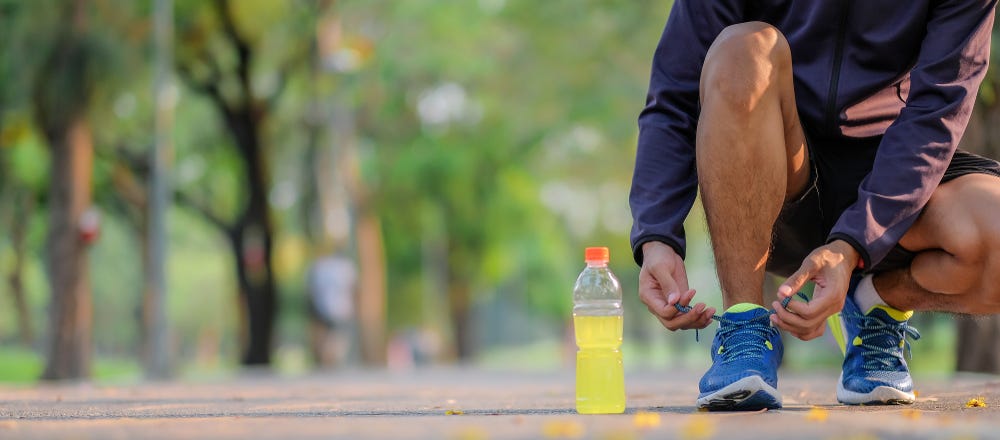There might be a reason why watermelon is such a refreshing snack before, during, and after exercise. Amongst its other hydrating properties, watermelon is naturally high in citrulline. Citrulline is a non-essential amino acid that the body uses for several different biological processes. One of these processes is as a vasodilator (i.e. the blood vessels widen allowing more blood to flow throughout the body). In this process,
1. Citrulline is converted to arginine
2. Arginine synthesis nitric oxide
3. Nitric oxide increases the size of blood vessels, allowing for more blood to flow to muscles and other parts of the body (vasodilation)
Ingredients that cause vasodilation are associated with increased sports/exercise performance and better cardiovascular health. Citrulline is no exception to this.
Multiple studies have shown that citrulline increases oxygen uptake in the muscles allowing for exercise endurance to increase. For example, one study showed that cyclists were able to perform 12% longer than those that did not take citrulline. For anaerobic strength-based workouts, studies have shown that citrulline increases the number of reps that can be performed and reduces soreness post-workout. For example, one study showed that participants taking citrulline were able to perform 53% more reps than those who did not take citrulline. This same study also showed that participants were 40% less sore than those not taking citrulline. Beyond exercise performance, multiple studies have shown that citrulline lowers overall blood pressure and decreases arterial stiffness. Other preliminary studies have shown that citrulline improves erectile dysfunction and might improve immune health and symptoms of sickle cell anemia.
Supplemental citrulline is found as either L-citrulline or citrulline malate. Both forms have been studied, but citrulline malate has shown the most significant results for sports nutrition. To increase exercise performance and endurance, 6-8 grams of citrulline malate (or 4-6 grams of L-citrulline) is recommended about an hour before exercise. For general (cardiovascular) health, 6 grams of citrulline malate (4 grams of L-citrulline) is recommended per day, divided up throughout the day.
Citrulline malate (or L-citrulline) is fairly neutral in taste, so it is easy to add to smoothies or other beverages. Preworkout supplements and beverages typically contain either a 1:1 or 2:1 ratio citrulline malate. A 1:1 ratio means that for every 2 grams of citrulline malate, you will be getting 1 gram of citrulline and 1 gram of malate. A 2:1 ratio means that for every 2 grams of citrulline malate you will be getting 1.67 grams of citrulline and 0.33 grams of malate. Although consuming malate has its benefits, it goes without saying that a 2:1 citrulline malate is better preferred to its 1:1 equivalent. For example, this preworkout contains a 2:1 citrulline malate in the (minimum) clinically studied amount. Keep in mind that consuming L-citrulline is just as effective; however, it requires a “loading” phase to see results. Citrulline malate does not require this and will provide instantaneous results.
Do you take citrulline? If so, do you think it works?




